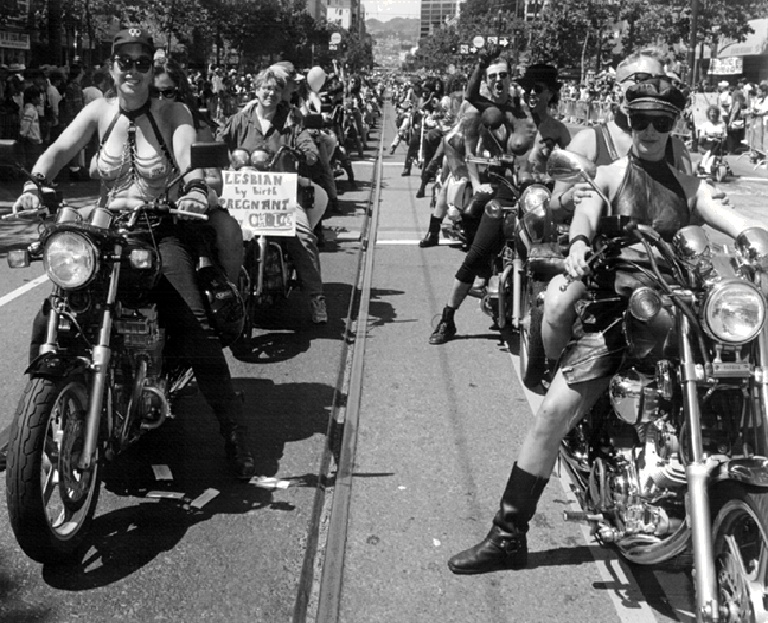Dykes On Bikes Love and Hate
|
|
| Some people like to use the group as an example of people who don’t fit in to the norm and to encourage the growth of hate. This example with found in the San Francisco Chronicle, written by Carl Nolte:
“To the rest of the United States, the San Francisco Bay Area is the nation's stronghold of pinkos, radicals, traitors and dangerous fringe groups. And the proof came last week in reports that the city that allows a group called Dykes on Bikes to parade up Market Street had refused to allow the U.S. Marine Corps to make a television recruiting commercial in the Financial District.” (Nolte)
Carl does this by basically pitted Dykes on Bikes against the U.S. Marine Corps. Longtime San Francisco gay activist Robert Bray said to the San Francisco Chronicle in April 1997. Ellen DeGeneres should go to "Celebrity 101 charm school, " he noted: "She spent most of the Time interview either distancing herself from gay activism or dissing gays and lesbians who don't fit the image she has in her mind - like dykes on bikes and drag queens. She should at least rise to the occasion and say something transformative." (Nakao) This example points out that in some people’s opinion that dykes on bikes and drag queens don’t fit in to the public norms.
However on the other end of the rainbow, lots of people find pride and strength in the fact that Dykes on Bikes don’t try to be anything they are not. "I'm really proud of the Dykes on Bikes, their power, strength and humor - and their defying convention," said Iris Bivlowitz above the roar of hundreds of revving bikes. (Kay) The San Francisco Pride Parade is one time that Dykes on Bikes really stand out and make a statement.
“The first appearance of women on motorcycles was in the late 1970s, the year of Anita Bryant. It was a very high-energy event. The dykes on bikes roared around the corner, and when I saw them, I cried. It was a wonderful thing to put up front, because it wasn't a cleaned- up image. It was a very powerful image of women looking strong, riding powerful machines making a big rumbling noise. So there was a breaking down of stereotypes.” (Tuller)
Says Dossie Easton to San Francisco Chronicle Staff writer David Tuller in 1997.
|

|
Dykes on Bikes: San Francisco, CA 1976-2010
Group Info
Name Changes
The Fight for the Name
Conclusion
Researched and Writtened by Susan Rennie
Contact: <a href="mailto:rennie.susan@gmail.com">rennie.susan@gmail.com</a>
